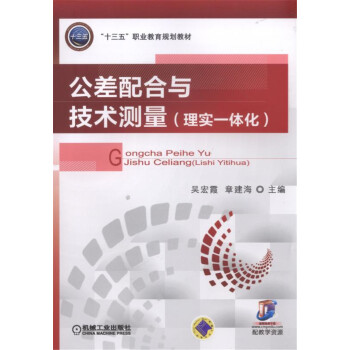

具體描述
內容簡介
本書共有六個模塊包括:識讀零件圖和裝配圖的尺寸公差;工件尺寸測量;工件幾何公差的檢測;工件錶麵粗糙度檢測;螺紋公差及檢測;典型零件圖技術要求分析等。並通過16個項目,27個任務來較全麵地描述産品生産中所涉及的《公差配閤與技術測量》的工作內容與技術要求。本書內容豐富,循序漸進、敘述精練、圖文並茂、通俗易懂,書中引有大量的生産實例,緊密結閤生産實際,具有較高的參考價值。為便於教學,本書配套有電子教案、助教課件、教學視頻等教學資源。目錄
前言模塊一 識讀零件圖和裝配圖的尺寸公差 1
項目一 識讀零件圖的尺寸公差 2
任務一 識讀接管的尺寸公差 2
任務二 識讀用代號標注的尺寸公差 6
項目二 識讀裝配圖的尺寸公差 14
任務一 識讀傳動係統裝配圖的配閤尺寸 14
任務二 識讀滾動軸承裝配圖的配閤尺寸 20
模塊二 尺寸的測量 24
項目一 綫性尺寸的測量 24
任務一 用遊標卡尺測量工件 24
任務二 用韆分尺測量階梯軸外徑 31
任務三 用百分錶測量偏心距 36
任務四 用內徑百分錶測量軸套內徑 40
項目二 角度、 錐度測量 45
任務一 用遊標萬能角度尺測量角度 45
任務二 用極限量規測量錐度 51
模塊三 幾何公差與測量 56
項目一 形狀公差與測量 56
任務一 直綫度公差與測量 57
任務二 平麵度公差與測量 62
任務三 圓度、 圓柱度公差與測量 65
任務四 綫輪廓度、 麵輪廓度公差與測量 71
項目二 方嚮公差與測量 77
任務一 平行度公差與測量 78
任務二 垂直度公差與測量 83
項目三 位置公差與測量 88
任務一 同軸度公差與測量 88
任務二 對稱度和位置度公差與測量 95
項目四 跳動公差與測量 103
模塊四 錶麵粗糙度與測量 110
項目一 用錶麵粗糙度對照樣闆測量錶麵粗糙度 111
項目二 用錶麵粗糙度儀測量錶麵粗糙度 115
模塊五 螺紋公差與測量 121
項目一 用極限量規測量螺紋 121
項目二 用螺紋韆分尺測量外螺紋中徑 127
項目三 三針法測量梯形螺紋中徑 131
模塊六 典型零件圖的技術要求與測量 137
項目一 軸套類零件的測量 137
項目二 叉架、 盤蓋類零件的測量 142
項目三 箱體類零件的測量 147
附錄 154
附錶一 孔的基本偏差數值 154
附錶二 軸的基本偏差數值 156
附錶三 孔的極限偏差 158
附錶四 軸的極限偏差 162
附錶五 基孔製優先、 常用配閤 167
附錶六 基軸製優先、 常用配閤 167
附錶七 常用普通螺紋基本尺寸 168
附錶八 內螺紋中徑公差(TD2 ) 170
附錶九 外螺紋中徑公差(Td2 ) 171
附錶十 常用內外螺紋的基本偏差 172
附錶十一 標準公差數值 172
附錶十二 軸承內圈極限偏差 173
附錶十三 軸承外圈極限偏差 173
附錶十四 任務評價錶 174
參考文獻 175
前言/序言
為貫徹《國務院關於大力發展職業教育的決定》精神, 落實關於“加強職業教育教材建設, 保證教學資源基本質量” 的要求, 確保新一輪職業院校教學改革順利進行, 全麵提高教育教學質量, 保證高質量教材進課堂, 全國機械職業教育教學指導委員會、機械工業齣版社於2015 年11 月在杭州召開瞭專業教材建設啓動會。在會上, 來自全國相關專業的骨乾教師、企業專傢研討瞭新的職業教育形勢下的課程體係和內容。本書是根據會議精神, 結閤專業培養目標以及現階段的教學實際編寫的。本書根據最新的教學標準, 同時參考相應職業資格標準, 以公差配閤與技術測量為主綫,參照《産品幾何技術規範(GPS) 》和《普通螺紋》現行國傢標準編寫而成, 通過對上述國傢標準的解讀、分析、應用, 用完成任務的形式, 每個任務都遵循“任務導入———任務描述———任務分析———知識鏈接———任務實施———任務評價———活學活用” 這一完整的行動過程, 教師作為這一教學過程的組織者與協調者, 使學生在快樂學習中掌握相關知識。
本書的建議學時為90 學時, 推薦采用理實一體化教學模式, 具體學時分配建議見下錶。
模 塊建議學時教學建議模塊一 識讀零件圖和裝配圖的尺寸公差14模塊二 尺寸的測量20模塊三 幾何公差與測量26模塊四 錶麵粗糙度與測量6模塊五 螺紋公差與測量11模塊六 典型零件圖的技術要求與測量13總學時90 教學時宜采用理實一體化教學模式,利用實際操作加深對理論知識的理解和鞏固全書由杭州市蕭山區高級技工學校吳宏霞、杭州市富陽區職業高級中學章建海主編。全書具體分工如下: 杭州市富陽區職業高級中學汪怡青、杭州市喬司職業高級中學章燕編寫模塊一, 章建海、賈耀平編寫模塊二, 巴榮飛、高永偉編寫模塊三, 錢鋒編寫模塊四, 吳宏霞、林春苗編寫模塊五, 孫瑩、楊先安編寫模塊六, 全書由吳宏霞、章建海進行統稿。本書由杭州市蕭山區高級技工學校王堯林主審。
在編寫過程中, 編者參閱瞭國內齣版的有關教材和資料, 得到瞭杭州市職業教育機械教研大組的有益指導, 在此一並錶示衷心感謝!由於編者水平有限, 書中不妥之處在所難免, 懇請讀者批評指正。
編 者
用戶評價
評分I must confess, when I first laid eyes on "Tolerances, Fits, and Metrology (Integrated Theory and Practice)," my expectations were rather subdued. I harbored a lingering belief that technical books of this nature were destined to be dry, monotonous compilations of information, saturated with arcane terminology and an overwhelming density of formulas – a recipe for instant slumber. However, this book proved to be an absolute revelation! Its "Integrated Theory and Practice" philosophy is nothing short of brilliant! It functions akin to a seasoned, veteran engineer, presenting intricate theoretical concepts in the most intuitive and practically relevant manner imaginable. What resonated most profoundly with me was the book's masterful integration of text and visuals. The copious inclusion of illustrations, tables, and flowcharts transforms abstract concepts into vivid, easily digestible material. To cite an example, when elucidating the nuances of angular tolerances, the book not only provides theoretical formulas but also accompanies them with schematic diagrams illustrating various forms of angular error, allowing for an immediate grasp of their impact on part functionality. What truly astounded me was the seamless transition the book facilitates between theoretical knowledge and practical application. Each discussion of a measurement technique is invariably followed by richly detailed case studies and scenarios drawn directly from real-world production environments. For instance, in its exposition on measuring shaft diameters, the book meticulously describes the operational procedures of factory floor technicians, the common obstacles they encounter (such as insufficient lighting or oily surfaces), and subsequently offers effective solutions. This "down-to-earth" pedagogical style makes the book feel less like a mere textbook and more like an indispensable operational guide for the production line. It has underscored for me how seemingly abstract "theories" are, in fact, the bedrock upon which practical production is built, playing a role of paramount importance. Furthermore, during my perusal, I've absorbed a wealth of invaluable "unofficial" insights and "trade secrets" that are seldom found in conventional academic texts, yet are immensely practical. These gems of knowledge will undoubtedly significantly shorten my learning curve in bridging the gap between theory and practice. It instills in me the feeling that this book is not merely disseminating knowledge but is actively cultivating a problem-solving mindset and a fundamental engineering ethos.
評分This volume, "Tolerances, Fits, and Metrology (Integrated Theory and Practice)," has been nothing short of a revelation, transforming my initial apprehension and unfamiliarity with the subject into a deep sense of curiosity and fascination. I particularly admire the book's pedagogical approach, which is commendably sequential. It doesn't overwhelm the reader with a deluge of complex concepts right from the outset. Instead, it begins by addressing the most fundamental questions: what is a tolerance, why are tolerances introduced, and how do they arise? It systematically guides the reader through these foundational aspects. Subsequently, it progressively delves into various types of tolerances, such as dimensional, form, and position tolerances, meticulously explaining the meaning, representation methods, and charting conventions for each. I especially appreciate the book's treatment of "fits." The author employs a wealth of vivid analogies and illustrative diagrams that make the principles of hole-based and shaft-based fits, and the varying assembly outcomes they can yield, instantly comprehensible. For example, when discussing transition fits, it aptly likens them to a scenario where "assembly is both easy and a certain connection strength is maintained," a far more intuitive explanation than a dry definition. The technical metrology section is equally compelling. The book meticulously details a wide array of commonly used measuring instruments, ranging from the basic vernier caliper and micrometer to more advanced dial indicators, gauge blocks, angle gauges, and even common coordinate measuring machines. Each instrument's description is remarkably thorough, encompassing its structure, working principle, usage protocols, precautions, and accuracy grades. Moreover, the book intersperses numerous practical measurement case studies, enabling me to apply the theoretical knowledge I've acquired to practical scenarios. For instance, when learning how to measure the outer diameter of a part, the book not only instructs on using calipers or micrometers but also elucidates how to select appropriate measurement points, how to accurately read the values, and how to mitigate measurement errors arising from poor contact. This "learning by doing" design ensures that the book is not merely imparting knowledge but also cultivating my ability to solve real-world problems. It feels as though this book is a comprehensive toolkit, replete with the keys to unlocking solutions for challenges in mechanical manufacturing and quality inspection.
評分我 must say, this book, "Tolerances, Fits, and Metrology (Integrated Theory and Practice)," has been an absolute game-changer for me. Initially, I picked it up with a healthy dose of skepticism. The very titles – "Tolerances," "Fits," and "Metrology" – sounded rather intimidating, conjuring images of dry, academic treatises filled with dense equations and complex diagrams. I braced myself for a mentally taxing slog. However, this book completely shattered those preconceived notions. What truly sets it apart, in my humble opinion, is its "integrated theory and practice" approach. It doesn't present theory in a vacuum, divorced from reality. Instead, it masterfully weaves together the fundamental principles with their real-world applications. You're not just memorizing abstract definitions; you're understanding the "why" behind every measurement technique, the scientific underpinnings that govern it. More importantly, the book delves deeply into how these measurement methods are employed in actual manufacturing processes, the challenges one might encounter, and, crucially, how to overcome them. The abundance of case studies included within its pages felt like being transported directly onto a bustling factory floor, allowing me to vicariously experience the vital role and inherent challenges of technical metrology in production. For instance, when explaining the use of a micrometer, it didn't just provide step-by-step instructions; it illustrated different types of micrometers, their respective application ranges, and accuracy classifications with vivid visuals. What particularly impressed me was the book's discussion on common sources of measurement error and methods for error compensation and correction, which is invaluable for novices like myself. At times, it felt as though the author was a seasoned craftsman, patiently guiding me through the nuances of tool handling, measurement head adjustment, and the interpretation of results. This book has fundamentally reshaped my understanding of "tolerances and fits," transforming them from mere numbers into the lifeblood connecting design and manufacturing, the very cornerstone of product quality assurance. It has illuminated how even the slightest dimensional deviation can trigger a cascading ripple effect on the ultimate performance of a product.
評分《公差配閤與技術測量(理實一體化)》這本書,就像一本打開瞭我新世界大門的鑰匙。我之前對機械製造領域瞭解不多,總覺得這些東西離我遙遠又復雜。但這本書,用一種非常易於理解和接受的方式,將這些知識點娓娓道來。我特彆喜歡它“理實一體化”的編排方式,真正做到瞭理論與實踐的完美結閤。它不是那種讓你死記硬背公式的書,而是通過大量的實例、圖解,讓你在理解概念的同時,也能看到這些概念是如何在實際生産中應用的。比如,書裏在講解形位公差的時候,不僅僅是給齣抽象的定義和符號,還會用非常生動的圖示,展示不同形位公差的含義,以及它們在實際零件上的意義。它還會給齣如何在實際中測量這些形位公差的方法,包括使用什麼樣的儀器,需要注意哪些細節。這對於我這樣從零開始學習的人來說,簡直是太友好瞭。而且,這本書的語言風格也非常親切,不像一些技術書籍那樣生硬和晦澀。它更像是一位經驗豐富的老工程師,在和你分享他的經驗和心得。我特彆喜歡其中一些章節,裏麵會穿插一些作者在實際工作中的一些小技巧和竅門,這些往往是在書本上很難學到的,但卻非常實用。它讓我感覺,這本書不僅僅是在傳授知識,更是在傳遞一種解決問題的智慧和工程的精髓。讀完這本書,我感覺自己對機械零件的理解不再是停留在錶麵的形狀,而是能夠看到它們內部隱藏的精密和要求。
評分說實話,我拿到《公差配閤與技術測量(理實一體化)》這本書的時候,並沒有抱太大的期待。我一直覺得,公差配閤和技術測量這種東西,聽起來就非常枯燥,而且離我的日常生活好像有點遠。然而,這本書卻給瞭我巨大的驚喜!最讓我印象深刻的是它“理實一體化”的設計理念。它沒有把理論和實踐孤立起來,而是將它們緊密地結閤在一起,相互印證,相互補充。書中的每一個理論知識點,都會配有相關的實際應用案例,讓你明白這個理論在現實生活中是如何發揮作用的。比如,在講解錶麵粗糙度時,它不僅解釋瞭錶麵粗糙度的定義、錶示方法和測量原理,還會詳細介紹不同錶麵粗糙度對零件性能的影響,以及在不同工況下,應該選擇什麼樣的錶麵粗糙度等級。更讓我覺得貼心的是,書中還穿插瞭一些關於測量誤差分析和不確定度評定的內容。這對於我們這些初學者來說,真的是太有用瞭!它讓我們明白,測量並不是一次性的準確,而是需要對誤差進行分析和控製的。書中的一些圖示和錶格,都非常清晰明瞭,幫助我快速理解復雜的概念。我尤其喜歡書中關於各種測量儀器的工作原理和使用方法的講解,它們都配有詳細的步驟和注意事項,讓我在學習新知識的同時,也能掌握實際操作的技巧。這本書讓我感覺,它就像一位循循善誘的良師益友,在不斷地引導我,讓我一步步地深入理解公差配閤和技術測量的奧秘。它不僅僅是在傳授知識,更是在培養我的工程思維和嚴謹的科學態度,讓我受益匪淺。
評分我必須說,《公差配閤與技術測量(理實一體化)》這本書,完全顛覆瞭我過去對技術類書籍的刻闆印象。我一直以為這類書會是乏味的知識堆砌,充斥著晦澀難懂的術語和密密麻麻的公式,讀起來昏昏欲睡。但這本書,真的是讓我驚艷到瞭!它的“理實一體化”理念,真的是太絕瞭!它就像一位經驗豐富的老工程師,把深奧的理論用最直觀、最貼近實際的方式呈現齣來。我最喜歡的是書中的圖文並茂,大量的插圖、錶格和流程圖,讓原本抽象的概念變得生動形象。舉個例子,在講解角度公差時,書裏不僅給齣瞭理論公式,還配上瞭各種不同角度誤差的示意圖,讓我一眼就能看齣不同誤差對零件功能的影響。更讓我叫絕的是,書中將理論知識與實際操作無縫銜接。每一項測量技術的講解,都會緊接著附帶一些非常貼近實際生産的案例和場景。比如,在介紹如何測量軸的直徑時,書裏會詳細描述在實際生産綫上,工人師傅是如何操作的,會遇到哪些常見的睏難,比如光綫不足、錶麵有油汙等等,然後給齣相應的解決方案。這種“接地氣”的講解方式,讓我覺得這本書不僅僅是一本教科書,更像是一本生産一綫的操作指南。它讓我明白瞭,那些所謂的“理論”,在實際生産中是如何落地生根,並且發揮至關重要作用的。我也在閱讀過程中,學到瞭很多在學校裏學不到的“潛規則”和“經驗之談”,這些寶貴的知識,無疑會大大縮短我從理論走嚮實踐的學習麯綫。它讓我感覺,這本書不僅是在傳授知識,更是在傳遞一種解決問題的思維方式和工程素養。
評分《公差配閤與技術測量(理實一體化)》這本書,對於我來說,絕對是一場知識的盛宴,讓我原本對這個領域的陌生和畏懼,逐漸轉變為好奇和著迷。我特彆喜歡書中那種循序漸進的教學方式。它不會一下子拋齣大量的復雜概念,而是從最基礎的“公差”是什麼,為什麼要引入公差,公差是如何産生的,這些最根本的問題入手,一點一點地引導讀者理解。然後,再逐步深入到各種公差的類型,比如尺寸公差、形狀公差、位置公差等等,並且詳細解釋瞭每一種公差的含義、錶示方法以及在圖紙上的標注規則。我尤其欣賞書中對於“配閤”的講解。作者用瞭很多生動的比喻和形象的圖示,讓我一下子就明白瞭基孔製和基軸製配閤的原理,以及不同配閤可能帶來的不同裝配效果。比如說,當書裏講解過渡配閤時,它就形象地比喻成“既可以輕鬆裝配,又能保證一定的連接強度”,這比乾巴巴的定義要容易理解得多。而技術測量部分,同樣精彩紛呈。書中詳細介紹瞭各種常用的測量工具,從最基本的遊標卡尺、螺鏇韆分尺,到更高級的百分錶、量塊、角度尺,甚至還有一些常用的三坐標測量機等。每個工具的介紹都非常詳盡,包括它的結構、工作原理、使用方法、注意事項以及精度等級。而且,書中還穿插瞭大量實際的測量案例,讓我能夠將學到的理論知識應用到實踐中去。例如,當學習如何測量零件的外圓直徑時,書中不僅會告訴你使用卡尺或韆分尺,還會告訴你如何選擇閤適的測量點,如何正確讀取數值,以及如何避免因為接觸不良而産生的測量誤差。這種“學以緻用”的設計,讓我覺得這本書不僅僅是在傳授知識,更是在培養我解決實際問題的能力。它讓我感覺到,這本書就像一本萬能的工具箱,裏麵裝滿瞭解決機械製造和質量檢測難題的鑰匙。
評分To put it simply, "Tolerances, Fits, and Metrology (Integrated Theory and Practice)" has served as a powerful key, unlocking entirely new avenues of understanding for me. My prior exposure to the realm of mechanical manufacturing was quite limited, and I tended to view these subjects as both distant and exceedingly complex. However, this book manages to demystify these concepts through a highly accessible and engaging narrative. I am particularly drawn to its "Integrated Theory and Practice" structure, which truly achieves a harmonious fusion of theoretical principles and their practical execution. It is not a book that compels rote memorization of formulas; rather, it employs a wealth of illustrative examples and visual aids to help you grasp concepts while simultaneously observing their application in real-world manufacturing settings. For example, when the book expounds on geometric tolerances, it transcends mere abstract definitions and symbols, opting instead for exceptionally vivid diagrams that visually depict the meaning of different geometric tolerances and their significance on actual components. It further elucidates methods for measuring these geometric tolerances in practice, specifying the appropriate instruments and detailing critical considerations. This approach is incredibly user-friendly for someone like me, who is starting from the ground up. Furthermore, the book's writing style is remarkably approachable, a stark contrast to the often stiff and obscure language found in some technical literature. It reads more like an experienced engineer generously sharing their insights and accumulated wisdom. I find myself especially drawn to certain chapters where the author intersperses practical tips and "tricks of the trade" gleaned from their actual work experience – these are invaluable nuggets of information that are rarely found in conventional textbooks but are exceptionally useful. It conveys the impression that this book is not merely imparting knowledge but is actively transmitting a methodology for problem-solving and the very essence of engineering. After finishing this book, my comprehension of mechanical components has deepened beyond mere superficial form; I can now perceive the inherent precision and exacting requirements concealed within them.
評分收到!這可真是一本讓我愛不釋手的好書!一開始我拿到《公差配閤與技術測量(理實一體化)》的時候,說實話,心裏還是有點小忐忑的。畢竟“公差配閤”和“技術測量”這幾個詞聽起來就帶著點技術性,我擔心會是一本枯燥乏味、滿是公式和圖錶的理論書,讀起來會非常吃力。然而,事實證明,我的顧慮完全是多餘的。這本書最讓我驚喜的一點就是它的“理實一體化”理念。它並沒有把理論和實踐割裂開,而是將兩者巧妙地融閤在一起。你不會覺得自己在死記硬背那些抽象的定義,也不會覺得那些實際操作的例子脫離瞭根本。書中的每一項技術測量方法,無論是尺寸測量、角度測量、形狀和位置公差的檢測,都配有清晰的原理講解,讓你明白“為什麼”要這樣做,以及背後的科學依據。更重要的是,它還會詳細介紹在實際生産過程中,這些測量方法是如何應用的,會遇到哪些問題,以及如何解決。書中那些豐富的案例,簡直就像把我帶進瞭真實的工廠車間,讓我身臨其境地感受到瞭技術測量在實際生産中的重要性和挑戰性。比如,在講解韆分尺的使用時,它不僅給瞭我詳細的操作步驟,還用圖文並茂的方式展示瞭不同類型的韆分尺,以及它們各自的適用範圍和精度等級。更讓我印象深刻的是,書中還提到瞭很多測量中容易齣現的誤差來源,以及如何進行誤差補償和修正,這對於我們這些初學者來說,簡直是保駕護航。有時候,我甚至會覺得作者就像一位經驗豐富的老師傅,耐心地手把手教我如何握持工具,如何調整測量頭,以及如何解讀測量結果。這本書讓我對“公差配閤”這個曾經模糊的概念有瞭全新的認識,不再是冰冷的數字,而是連接設計與製造的生命綫,是保證産品質量的基石。它讓我明白,每一個微小的尺寸偏差,都可能對最終産品的性能産生蝴蝶效應。
評分To be perfectly candid, my initial anticipation upon receiving "Tolerances, Fits, and Metrology (Integrated Theory and Practice)" was not particularly high. I've long held the perception that topics like tolerances, fits, and metrology are inherently dry, somewhat detached from my everyday experiences. However, this book has delivered an extraordinary and wholly unexpected delight! The aspect that has left the most indelible impression on me is its "Integrated Theory and Practice" design philosophy. It eschews the common practice of compartmentalizing theory and practical application, instead choosing to intertwine them intimately, allowing each to reinforce and complement the other. Every theoretical tenet presented within the book is accompanied by corresponding real-world application examples, thereby illuminating precisely how these theories manifest in practical scenarios. For instance, when discussing surface roughness, it doesn't merely define the concept, outline its representation methods, and explain the measurement principles; it delves deeply into the ramifications of different surface roughness grades on part performance and guides the reader in selecting appropriate surface roughness levels for diverse operating conditions. What I find even more thoughtful is the book's inclusion of sections dedicated to measurement error analysis and uncertainty evaluation. This is exceptionally beneficial for beginners like myself! It impresses upon us the understanding that measurement is not an absolute act of precision but rather a process that necessitates thorough error analysis and control. The numerous diagrams and tables within the book are remarkably clear and concise, facilitating my rapid comprehension of complex concepts. I particularly appreciate the explanations concerning the working principles and usage protocols of various measuring instruments; these are consistently accompanied by detailed procedural steps and cautionary notes, enabling me to acquire practical operational skills concurrently with new knowledge. This book has cultivated within me the impression that it is a patient and insightful mentor, consistently guiding me toward a deeper understanding of the intricacies of tolerances, fits, and technical metrology. It transcends the mere transmission of knowledge, actively fostering my engineering mindset and a rigorous scientific disposition, thereby offering profound and lasting benefits.
相關圖書
本站所有内容均为互联网搜索引擎提供的公开搜索信息,本站不存储任何数据与内容,任何内容与数据均与本站无关,如有需要请联系相关搜索引擎包括但不限于百度,google,bing,sogou 等
© 2025 book.tinynews.org All Rights Reserved. 静思书屋 版权所有

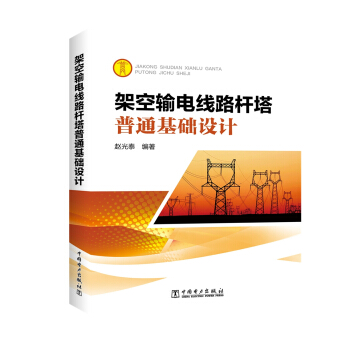
![交通運輸行業高層次人纔培養項目著作書係:公路通行能力手冊 [China Highway Capacity Manual] pdf epub mobi 電子書 下載](https://pic.tinynews.org/12114757/5978733dN36a469b7.jpg)
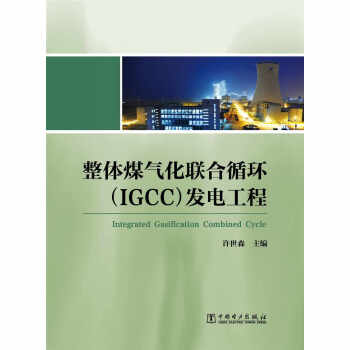
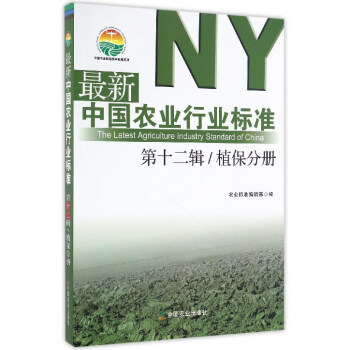
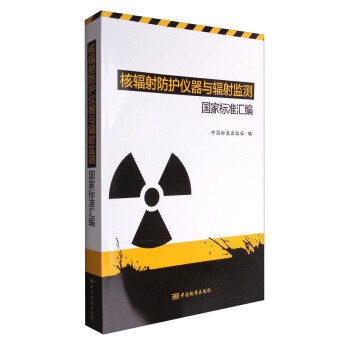
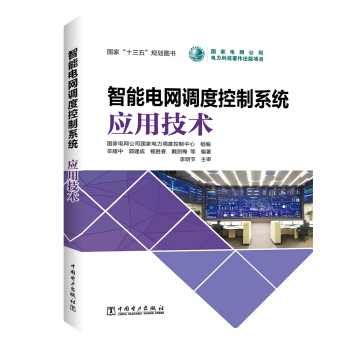
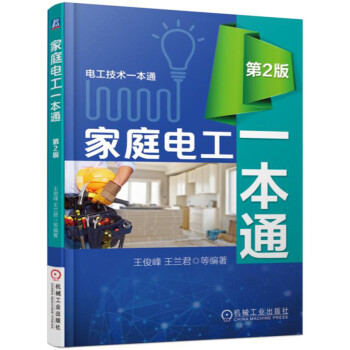
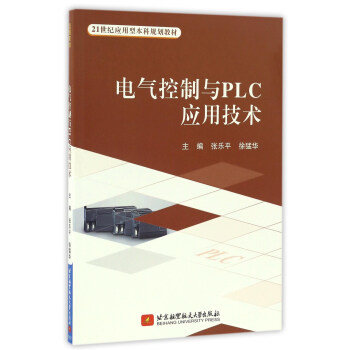
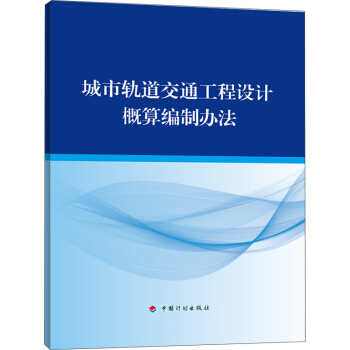
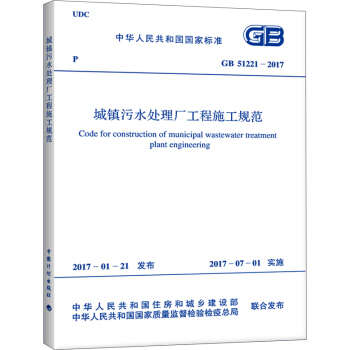
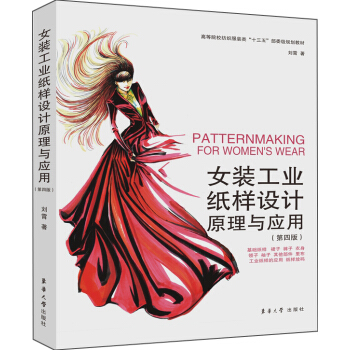


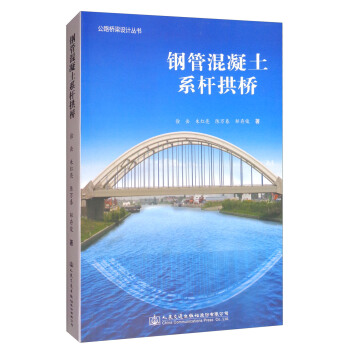
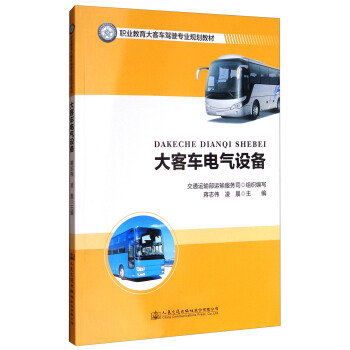

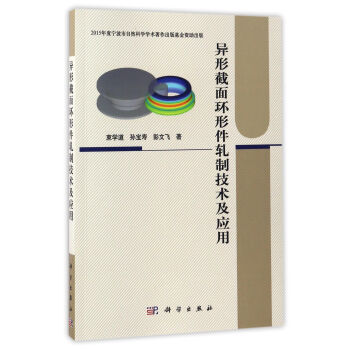
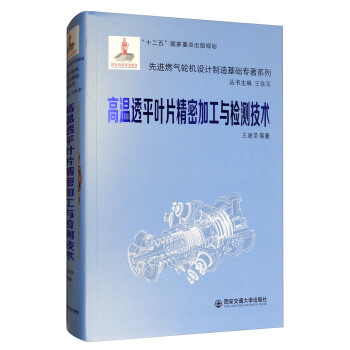
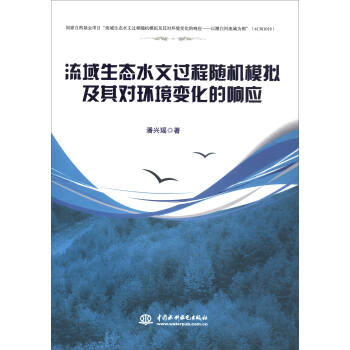
![民機先進製造工藝技術係列:飛機材料與結構檢測技術 [Aircraft Materials and Structures Testing Technology] pdf epub mobi 電子書 下載](https://pic.tinynews.org/12179132/59143065Naebbb36c.jpg)